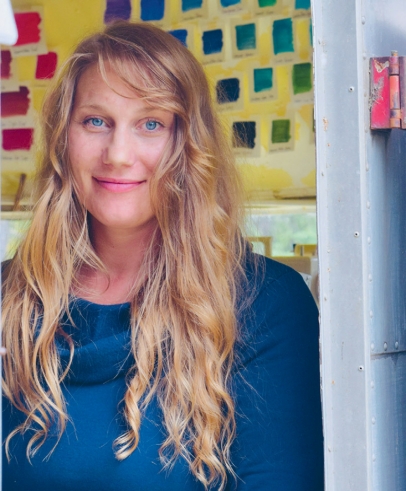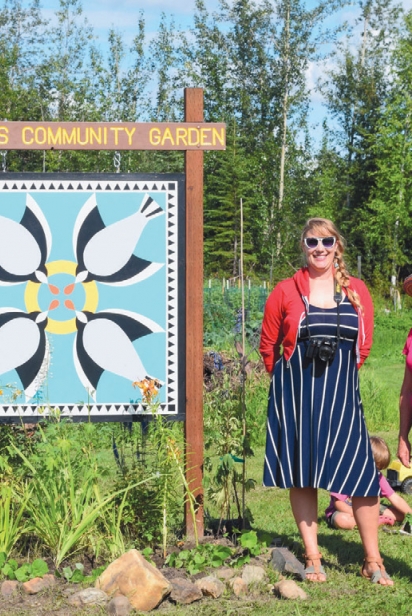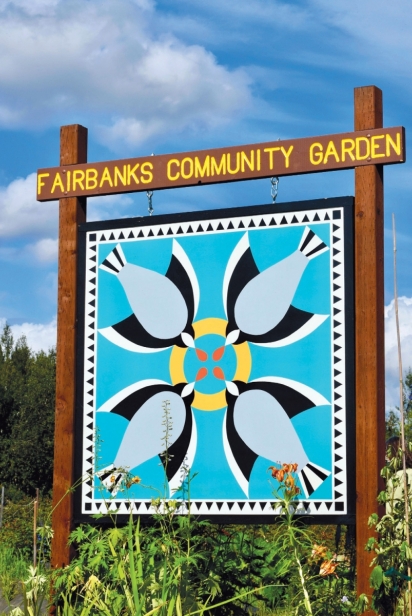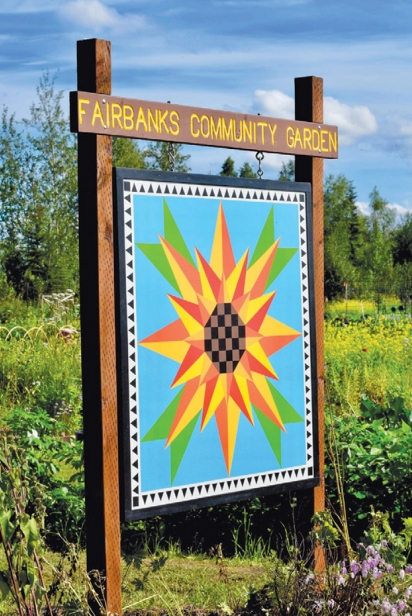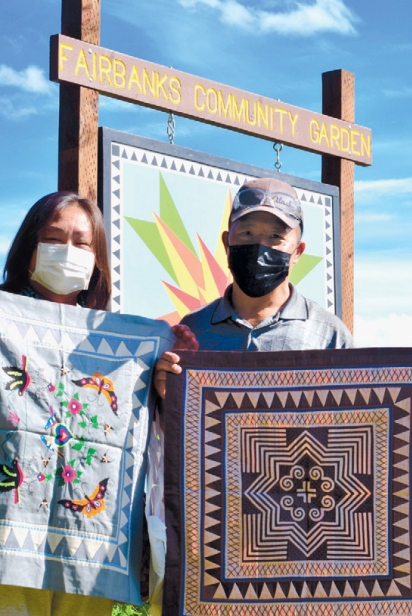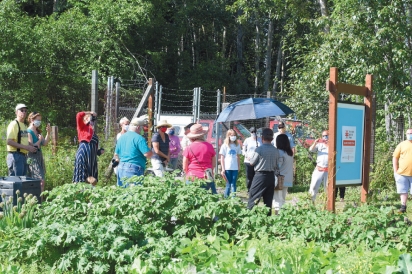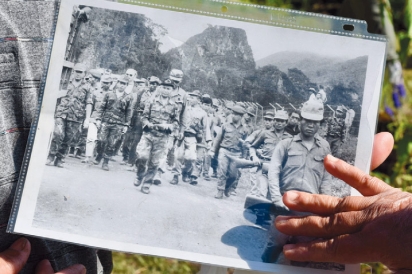Art in the Garden
The Far North Quilt Trail Project
Whether exploding in green or under a blanket of snow, the long-lived Fairbanks Community Garden now boasts new year-round residents: a quartet of stationary juncos and a single, brilliant sunflower to watch over the moose and magpie’s lingering and occasional looting. This is thanks to garden manager Wendy Anderson and visual artist Somer Hahm, as well as a supportive and enthusiastic community that / as part of a larger statewide project.
Somer Hahm has been a practicing artist in Fairbanks since 2005, and in 2020 received an Individual Artist Award from Rasmuson Foundation. She recently gave a talk at the Anchorage Museum about the scope of her work, including The Far North Quilt Trail Project. She installs colorful, eye-catching geometric murals as public landmarks throughout Alaska, that, in Hahm’s words, stretch the concept of where paintings can live. The Quilt Trail now comprises more than 13 painted quilts across the state, with the Fairbanks garden being one of the very first installation sites of the project.
Coming together in the thick of the surreal 2020 summer, the Fairbanks Community Garden held a small, quiet, but deeply meaningful celebration and ceremony for the installation of two large, outdoor paintings: “Juncos” and “Sunflower” by Somer Hahm.
Hahm’s Quilt Trail Project and the work at the garden dovetail in their mission: to provide safe, welcoming, and thoughtful community spaces. Here are some photos that attempt to capture the quiet magic of last year’s installation ceremony as a reminder of how creativity and community—the kind found in beautiful public murals, navigating group celebrations during a pandemic, and coaxing sustenance from soil—can unite us in gratitude, embolden us with pride in our perseverance, and make us carefully consider our relationship with and reliance upon our surroundings and one another.
Before the unveiling, Somer Hahm spoke briefly to the small group: “I had many people to thank, and I also wanted to acknowledge the work being installed upon ancestral and unceded traditional territory of the Lower Tanana Dene Peoples and the Dena’ina Peoples, in thanks to the Indigenous communities who have held a relationship to this land for generations, and in recognition of the historical and ongoing legacy of colonialism.”
Sunflowers “symbolize loyalty, adoration, and longevity,” and this design was chosen unanimously by the community garden’s board of directors out of a handful of the artist’s proposed designs. Most of these, like the two chosen, include aspects of well-known American quilt block patterns, which are featured in much of Hahm’s work for the Quilt Trail Project.
Another inspiration for the artist’s designs of “Juncos” and “Sunflower” was hyperlocal to the Fairbanks garden and its members. Yong Vang and Lee Vue, who emigrated from Vietnam, have been an instrumental part of the garden community for the past four years. The triangle-patterned border around both paintings is a nod to the traditional mountain borders on textiles and art, like the square being held by Vue. They say the mountain border has two important meanings to the Hmong people, many of which were displaced during the Vietnam War: it expresses the hardiness of those who live in harsh mountain conditions, as well as the protective aspect of the mountains themselves.
To learn more and see the full and growing map of Quilt Trail installations, go to The Far North Quilt Trail Project’s website at thefarnorthquilttrailproject.com, or Instagram @thefarnorthquilttrailproject.


